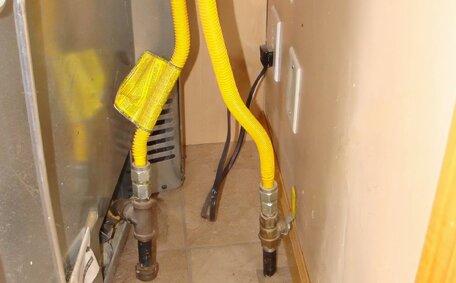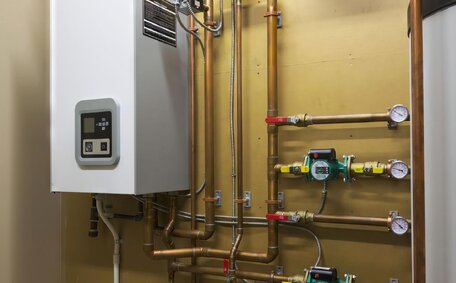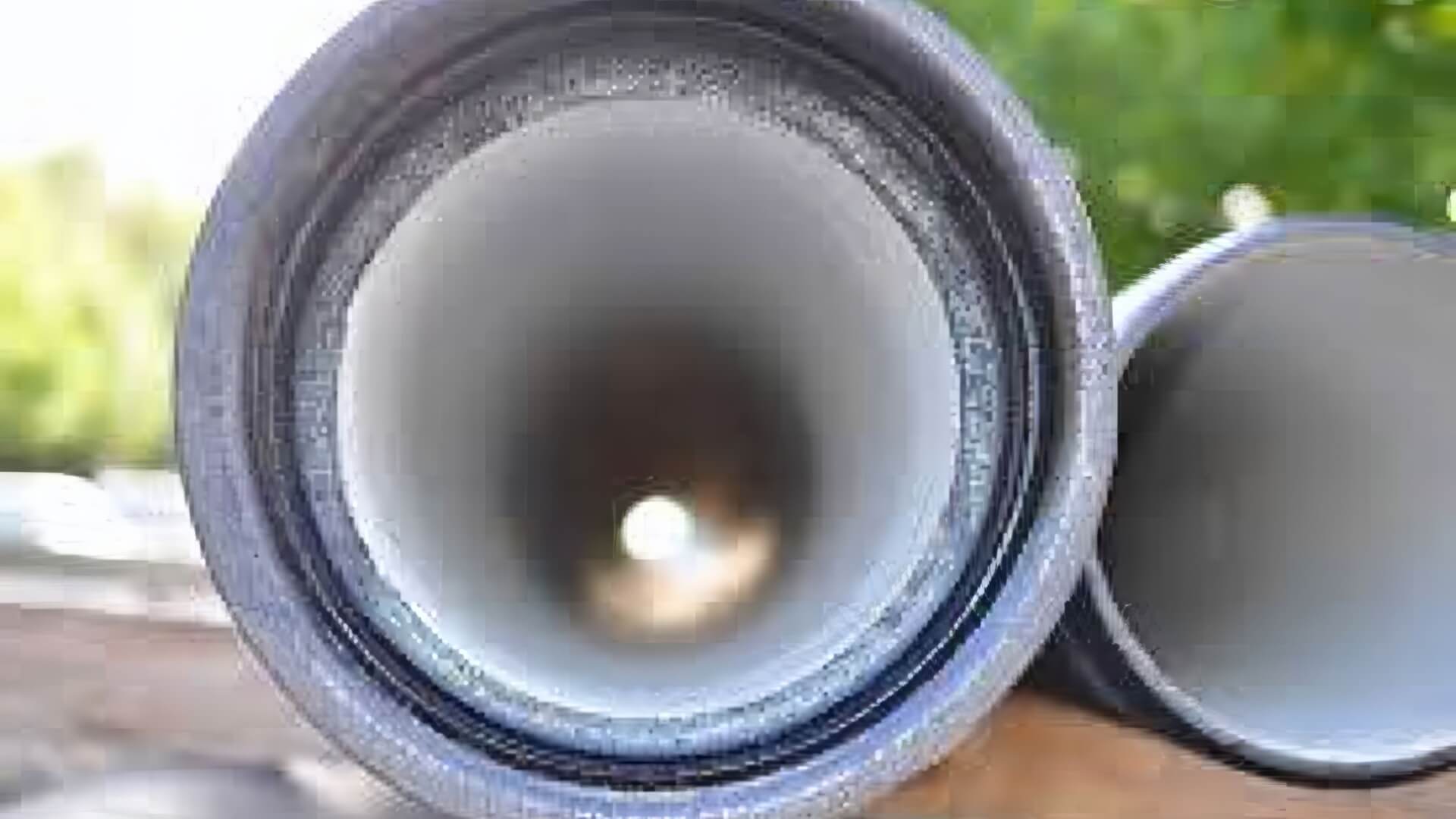
Keep Updated on Gas Appliance Recalls
Consumers should maintain awareness of current gas appliance recalls and safety alerts to prevent injuries. Check recall lists regularly to protect your home and family.
Read MoreSoil and sediment buildup can lead to a number of drainage issues, including blocked drains and pipes. This prevents proper water flow, and can cause backups, flooding, and water damage if left unchecked. Sediment refers to small particles of dirt, sand, clay and other natural materials that are washed into drainage systems.
Sediment pollution often originates from construction sites, agricultural areas, stormwater runoff, and other sources where soil is loose and gets carried away by water. Over time, this sediment collects in drains, pipes, gutters, and waterways. As debris accumulates, it slows down water flow and could eventually block passages completely.
Werrington Plumbing specialises in clearing blocked drain pipes and other plumbing issues. By stopping sediments from entering drainage systems in the first place, many future blockages and expenses can be avoided.
With years of experience tackling soil and sediment buildup issues in Werrington and surrounding suburbs, we have the expertise to diagnose drainage problems and implement the most effective solutions.
There are several major sources of sediment that commonly cause drain blockages in areas like Werrington.
Construction sites are a prime culprit, as digging foundations, moving soil, and landscaping leads to large amounts of loose sediment that gets washed into drains during storms. This is a particular issue in growing suburbs like Werrington that have ongoing residential and commercial development.
Logging and mining operations also loosen topsoil and sediment that inevitably finds its way into waterways. The greater Western Sydney area has had a history of some mining activity in surrounding regions.
soil erosion from farming and agriculture can send nutrient-rich sediment into rivers and drains. The Hawkesbury-Nepean catchment area that Werrington falls within is prone to soil erosion problems after intense rain.
Over time, the sediment from these sources makes its way into street gutters, storm drains, sinks, basins, and pipes. Without proper drainage and erosion control measures, the particles accumulate and impede water flow, often to the point of completely clogging drain pipes during peak water usage.
Construction sites are rife with practises that contribute excessive soil and sediment into drainage systems.
Clearing land of vegetation loosens topsoil that gets washed away by stormwater. Digging foundations also unearths soil and debris that inevitably finds its way into local drains and waterways.
Construction vehicles tracking mud and sediment onto roads leaves residues that clog street gutters and drains when it rains. Building materials like concrete and paint washoffs also contribute particles.
Without proper on site sediment control measures like silt fencing, drain guards and retaining sediment ponds, soil erosion and runoff can significantly affect waterways over months or years.
It is vital that construction companies have sediment management strategies, including stabilising dirt mounds, dust suppression, and diverting stormwater runoff to sediment traps. This will help capture particles before waterways can be affected or drainage infrastructure can be reached.
Logging and mining operations have severe impacts on soil erosion and sediment pollution. Heavy machinery strips away vegetation and topsoil, leaving vast tracts of loose sediment vulnerable to being washed away.
These industries produce especially high volumes of fine sediment - very small but highly problematic particles that waterways can carry for long distances. Their tiny size allows them to be easily transported long distances, meaning waterways can quickly become affected, infiltrating wetlands and suburban drainage systems.
Fine sediments remain suspended in water even during low and average flow conditions. Over time, these tiny particles accumulate in pipes and drainage areas with low fluid velocities, attracted to rough surfaces and blockages where they cling.
The effects on local waterways and drainage include: water appearing turbid; algal blooms flourishing; habitats being smothered; pipes gradually congesting until water struggles to pass through. Ultimately, mining sediments could turn minor drain blockages into full blockages.
Sediment runoff from mines and logging sites should be controlled via retention ponds, silt fences and stabilising exposed soil. This will help prevent particles entering waterways and drainage infrastructure.
Soil erosion is a major preventable cause of sediment pollution. There are both natural and human-induced processes that loosen topsoil and cause it to be transported into drains and waterways.
Deforestation, overgrazing, and unsustainable farming techniques strip away stabilising vegetation. This leaves soil vulnerable to being washed away by surface water flows, especially when rains are heavy.
Urbanisation also increases hard surfaces that accelerate runoff velocities, carrying more sediment into stormwater drains. Stream bank erosion exacerbates these issues when heightened water flows wear away banks.
The fine particles enter local creeks, wetlands and suburban drainage infrastructure. Over time, this gradually constricts drain pipes and causes blockages that impede water transportation. Preventing soil erosion is vital for housing developments like Werrington that are prone to drainage issues.
Environmental impacts of sediment pollution
Excessive sediment in waterways can severely impact water quality and aquatic environments. When loose soil particles enter waterways, it causes the water to become turbid and murky.
This affects the ability for light to penetrate and plants to photosynthesize, which is problematic for species reliant on clear water. It also enables algal blooms to thrive, forming toxic green masses on the water’s surface.
As sediment settles, it smothers lakebeds and river floors, destroying habitats for bottom-dwelling organisms and fish spawn sites. The imbalance caused can ripple up the food chain. Maintaining water quality by minimising sediment pollution is thus vital in local waterways.
The particles also transport absorbed chemical contaminants into natural environments. This could permeate soil and groundwater relied upon by surrounding suburban areas like Werrington for drinking water supplies.
Sediment pollution poses risks not only for biological habitats, but also human health, agriculture, and infrastructure. It’s why mitigating soil erosion and runoff is paramount, through measures like silt fences at construction sites or stabilising deforested mining regions.
Preventing sediment buildup and drain blockages
There are several effective strategies to prevent sediment buildup and drain blockages in areas prone to soil erosion and construction runoff like Werrington.
Installing silt bags in street drain pipes near construction sites or erosion-prone areas can capture a significant volume of sediment. These should be periodically emptied when full to maintain their effectiveness. Basic maintenance like regular drain inspections and clearing plant root infiltrations early on can also prevent gradual sedimentary constrictions turning into full blockages.
At construction projects, developers must install sediment control systems like retaining ponds to divert stormwater to sediment traps for particles to settle, instead of flowing freely into drains and waterways. Perimeter silt fences also filter runoff leaving sites.
Property owners should implement sustainable drainage systems like raingardens or wetlands. These absorb and slowly release stormwater into the ground instead of letting it rapidly flow into drains while carrying sediment. Having areas of permeable surfaces and groundcover vegetation further reduces erosion.
With some foresight and investment into preventative sediment controls, the most common drain blockage culprit can be mitigated. Keeping particles from entering local pipe infrastructure to begin with will maintain optimal water flows.
Silt bags provide a useful protective barrier to prevent sediment and debris from entering and clogging drainage systems. Installed directly into gully pits and street drains, they essentially act as a filter to capture particles before they can wash into pipes.
These durable bags are made from geotextile fabric with a fine mesh sized to filter out sand, silt and clay particles. These durable bags are made from geotextile fabric with a fine mesh sized to filter out sand, silt and clay particles.
Stormwater enters through the fabric, while sediment settles at the base of the bag.
To work effectively, silt bags need to be sized appropriately to handle potential water volumes from a site. Well-maintained silt bags can capture several hundred pounds of sediment over their lifespan.
They must also be checked and emptied regularly as they fill up. Allowing them to overfill severely decreases their performance.
With simple yet diligent use, silt bags offer an affordable and straightforward sediment control option for problem areas. Regular inspection and maintenance is key to ensuring they keep blocking particles from causing issues down the track in drain pipe infrastructure.
Sediment traps are containment areas designed to capture and settle out sediment-laden runoff before it enters local waterways or drainage systems. They are essential measures on construction sites and mining operations with a high risk of soil erosion.
These traps use gravity to allow sediment to settle out from surface water flows. Stormwater is diverted into ponds, channels or other impoundment areas, slowing down the velocity to give suspended soil particles time to sink to the base. The clearer water can then be discharged, while the sediment accumulates for periodic removal.
Location is key - they work best installed near areas prone to producing the highest sediment loads, or as close to drainage entry points as possible.
By preventing the material from ever reaching pipes, sediment traps provide vital proactive protection against gradual blockages. Well designed and positioned sediment traps with appropriate storage volume can capture over 70% of sediment from problematic sites.
Sustainable drainage systems (SuDS) are eco-friendly alternatives to traditional concrete and pipe drainage infrastructure. They work to slow and filter stormwater in order to mitigate issues like soil erosion, sediment pollution and contaminated runoff.
Types of SuDS include rain gardens, wetlands, infiltration basins, swales, permeable pavements and green roofs. These recreate natural drainage processes, using soil and vegetation to soak up and clean water onsite, before slowly releasing it into the ground or waterways.
The benefits of SuDS include reducing flood risk by increasing permeable surfaces to absorb flows. They filter out sediment, nutrients and metals from water. And by recharging groundwater and maintaining baseflows to local streams, they improve waterway health and drought resilience.
As areas like Werrington continue developing with more hardened surfaces, implementing SuDS becomes increasingly important. Preventing sediment and contaminants from entering local drain pipes protects infrastructure from blockages. Soil erosion and waterway pollution are also minimised through replicating the regulating services of natural environments.
Implementing some simple, responsible land drainage practises can make a big difference in preventing issues like pipe blockages and protecting local waterways.
Homeowners should ensure their properties have adequate drainage capacity to deal with potential stormwater runoff. This may require expanding existing systems or installing permeable landscaping like raingardens to absorb flows.
Buildings and paved areas should be graded properly to divert water away into collection areas, instead of letting it pool. This prevents excessive volumes from concentrating into drains.
Ensure guttering is regularly cleaned out to remove leaves and debris that could impede drainage. Invest in gutter guards or leaf filters to further reduce buildup of organic particles.
When undertaking construction projects, install temporary sediment control measures like silt fencing around the perimeter of the site, divert stormwater to settlement ponds, and stabilise freshly exposed soil.
Adopting responsible land drainage and erosion control practises prevents sediment, nutrients and contaminants from entering local waterways. Simple, conscientious measures by homeowners and developers can maintain effective stormwater drainage across the community.
When to call a professional plumber
In scenarios involving significant blockages, extensive drainage issues, or situations exceeding a typical homeowner’s capabilities, contacting a professional plumber is advised. The team at Werrington Plumbing are available via phone on 1300 349 338 or email at jobs@werringtonplumbingservices.com.au to provide prompt support.
Plumbers have specialised equipment like high-powered water jets and pipe inspection cameras to properly diagnose issues and implement the best solutions. Attempting to hydraulically clear a major blockage without appropriate experience risks making the situation worse and more expensive to remedy.
Werrington Plumbing’s licenced technicians can assess sediment buildup risks across your property and install preventative measures like silt bags or sediment traps. Relying on professional grade maintenance keeps drainage systems operating optimally.
For minor drain blockages, residents can try home remedies like plunging or flushing first. However extensive blockages involving multiple affected drains or backup damage, it’s vital to call qualified help immediately. Werrington Plumbing promises responsive emergency plumbing and damage control whenever severe situations emerge.
Consumers should maintain awareness of current gas appliance recalls and safety alerts to prevent injuries. Check recall lists regularly to protect your home and family.
Read MoreHard water leaves mineral deposits in hot water heaters and systems, causing corrosion and limescale buildup. This reduces efficiency and leads to higher energy bills and repair costs over time. Installing a water softener protects hot water appliances by removing the minerals that cause scale.
Read MoreYes, pipes can be relined more than once if they become damaged again. Our pipe relining service uses epoxy resin to coat the inside of your existing pipes, repairing cracks and damage for over 50 years. As experts, we’ll have your pipes relined in just one day with no digging required.
Read MoreWerrington, 2747 NSW
We will call back as soon as possible.




